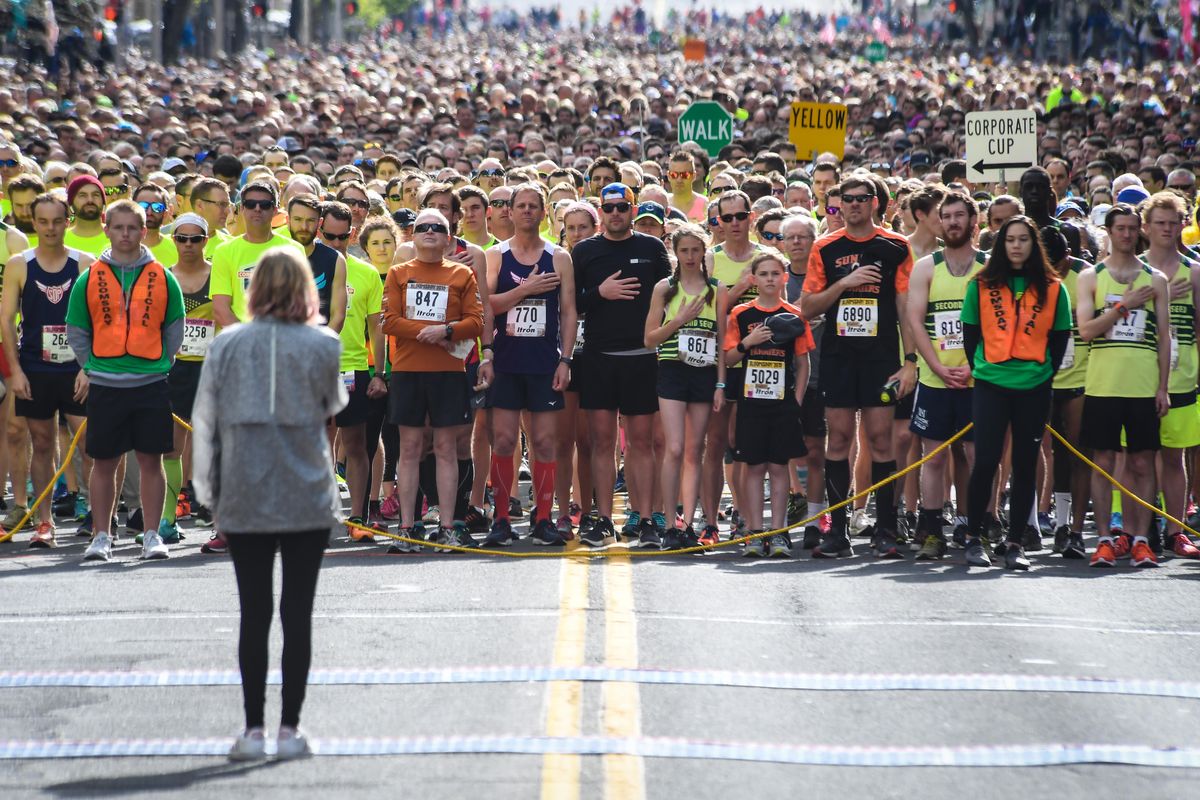Bloomsday attendance dip follows national trend

As road race participation drops across the country, Bloomsday saw its lowest participation in decades, with about 38,500 sign-ups.
This year was the first since 1985 that participation in the the 12K Lilac Bloomsday Run fell below 40,000.
Jon Neill, incoming Bloomsday race director, said volunteers are working to keep Bloomsday relevant and make sure it stays “Spokane’s crown jewel event.” He said Bloomsday leaders plan to talk to volunteers and participants to find out what they could do better, possibly including promotion, but they don’t yet have a plan for increasing Bloomsday attendance.
“We want to pay attention to what the trends are and if there’s a way we can correct numbers, and boost those, we’re going to try and do that,” he said. “But, the thing that we always emphasize, sometimes bigger isn’t always better.”
The number of road race participants nationwide dropped from 8.3 million in 2017 to 8.1 million in 2018, said Rich Harshbarger, CEO of running industry trade group Running USA.
He said other physical activities, such as yoga, cross fit and obstacle course races such as Spartan races, have increased significantly over the past decade, while marathon participation has plateaued.
On an average Sunday, there are about 700 road races and about 30,000 a year, Harshbarger said.
“Supply has outpaced demand,” he said.
Bloomsday’s highest participation followed national trends, with attendance increasing every year after it started in the 1970s and reaching it’s highest point in the 1990s. Harshbarger said during the late 1970s, late 1990s and early 2000s, many athletes were leaving more expensive sports and going back to basics, like running.
Richard Howland, one of Bloomsday’s oldest participants at 84, has run or walked in every Bloomsday since the race began in 1977, and said the race likely cleared the way for many of the sports it now competes with it.
“We opened the door for a lot of athletic events,” he said.
Karen Howland, who has either volunteered or run in Bloomsday with her husband since the race began, said she was hoping more young people would step up, now that many of the longtime supporters are getting too old to participate as much as they once did.
Richard Howland said this year might have been his last year walking due to his health, but he loves Bloomsday and wants to do what he can to stay involved.
Harshbarger said long-running races like Bloomsday may have to do more to set themselves apart now that many communities have their own athletic events that don’t require runners to travel far.
Even if participation continues to trend downward in the next few years, he said, the people who compete in marathons are often dedicated athletes and will continue to look for road races.
“Even though they may be intrigued and participating in other types of sports, people will continue to run,” Harshbarger said.
Neill said Bloomsday organizers have worked to create a Bloomsday experience with the course ending at the Monroe Street Bridge where participants can see the Spokane River as they walk to get their T-shirts and having a band and a trade show the day before the race.
Bloomsday has stayed the same over the years in many ways he said, but the participants have changed over the years. He said the number of people walking most of the race has increased significantly, which he sees as a good thing because families or people who can’t run the whole race can also be involved.
“Bloomsday is for everybody,” he said.